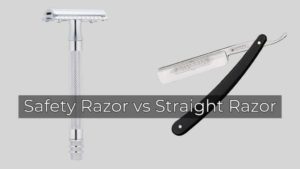
Physical and behavioral qualities of some dog breeds are extremely similar, making it difficult to tell them apart at first glance. The Doberman and the Rottweiler are two dogs with highly impressive physical power and distinct personalities, yet differences can be identified by doing a careful analysis of each.
Given the necessity of understanding a dog’s breed, or a mix of breeds, when adopting one so that you are completely aware of its demands and prepared to care for it, it is critical that you know what each one looks like so that you can distinguish them and better describe the health care you may require. If you’re curious, if you have a Doberman and Rottweiler mix at home, or if you own a dog from any of these breeds, keep reading to learn the differences between the Doberman and Rottweiler breeds, as well as their physical and behavioral features.
Main Differences between Doberman and Rottweiler
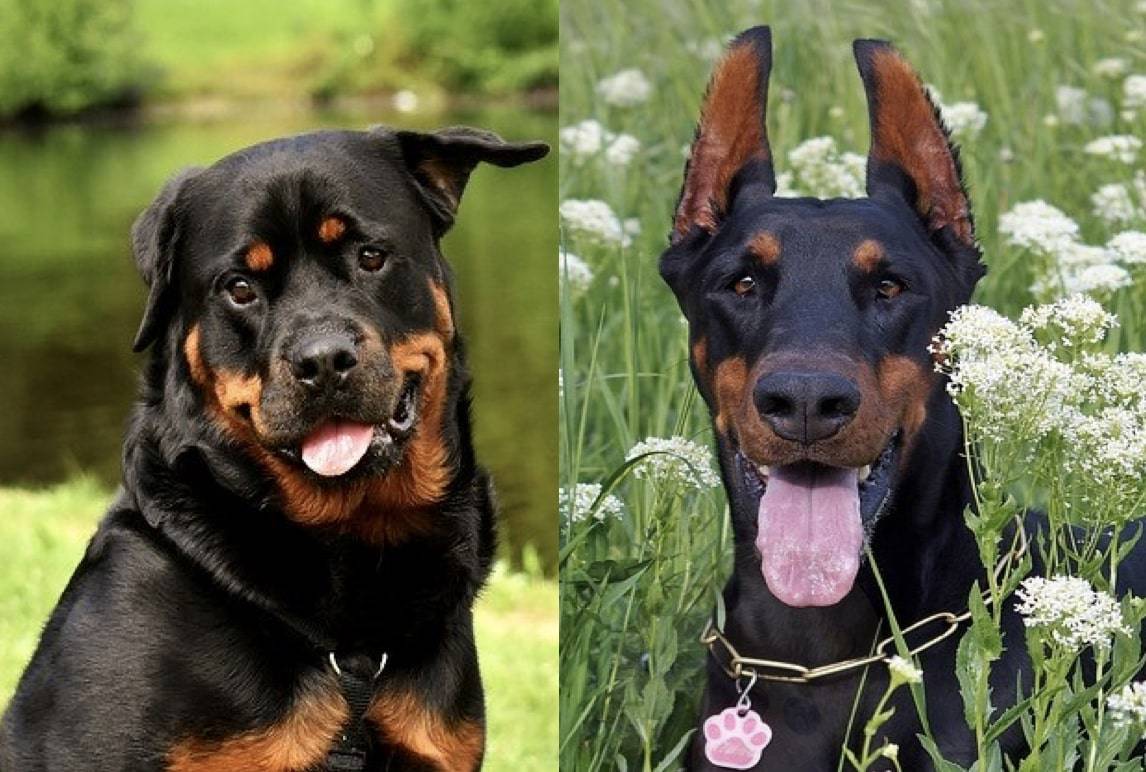
What’s the difference between a Doberman and a Rottweiler? Despite the Doberman’s and Rottweiler’s physical and temperamental similarities, the following distinctions can be identified between the two breeds:
- The Doberman has a sleek form, whereas the Rottweiler is stockier and more intimidating.
- The Doberman is taller than the Rottweiler in height. Even other enormous dogs pale in comparison.
- Dobermans have elongated oval-shaped eyes that are black or brown in color (depending on the color of the hair). The Rottweiler’s, on the other hand, have dark brown, almond-shaped or rounded teeth.
- Coat: Both breeds have thick, smooth, and short coats, while some Rottweilers have slightly longer fur in specific areas (mostly the neck and tail), but it is not even semi-long or medium. In addition, the official Rottweiler breed is always black with tan (golden brown) markings. The Doberman, on the other hand, can have any of these hues, but it can also have a fully black coat or a brown coat with tan spots.
- The Rottweiler’s lips are more drooping, although both breeds’ lips are pigmented and solid.
- The Doberman’s cranium is long and thin, but the Rottweiler’s is stockier and shorter.
- Nose: both breeds have a wide nose, but the Doberman’s is brown or black, while the Rottweiler’s is always black.
- The Doberman trot is a graceful and agile action. Because it is heavier and more robust, the Rottweiler moves by trotting and with more agitation.
- Ears: they are folded forward or a bit to the sides, although the Rottweiler’s are a little shorter. In both cases, the prominent color in the coat is the ears, which are usually black or brown in the case of brown and tan Dobermans.
- The tail of a Doberman is thinner and longer, while the tail of a Rottweiler is long but wider, especially at the base. When utilized in dog fighting, both breeds had their tails and ears cut for cosmetic reasons. Today, it is still done for both reasons in many areas, but thankfully, in many locations, it has already been regulated by legislation, and the clipping of ears and tails, as well as other non-health-related alterations to animals, has been forbidden.
Doberman
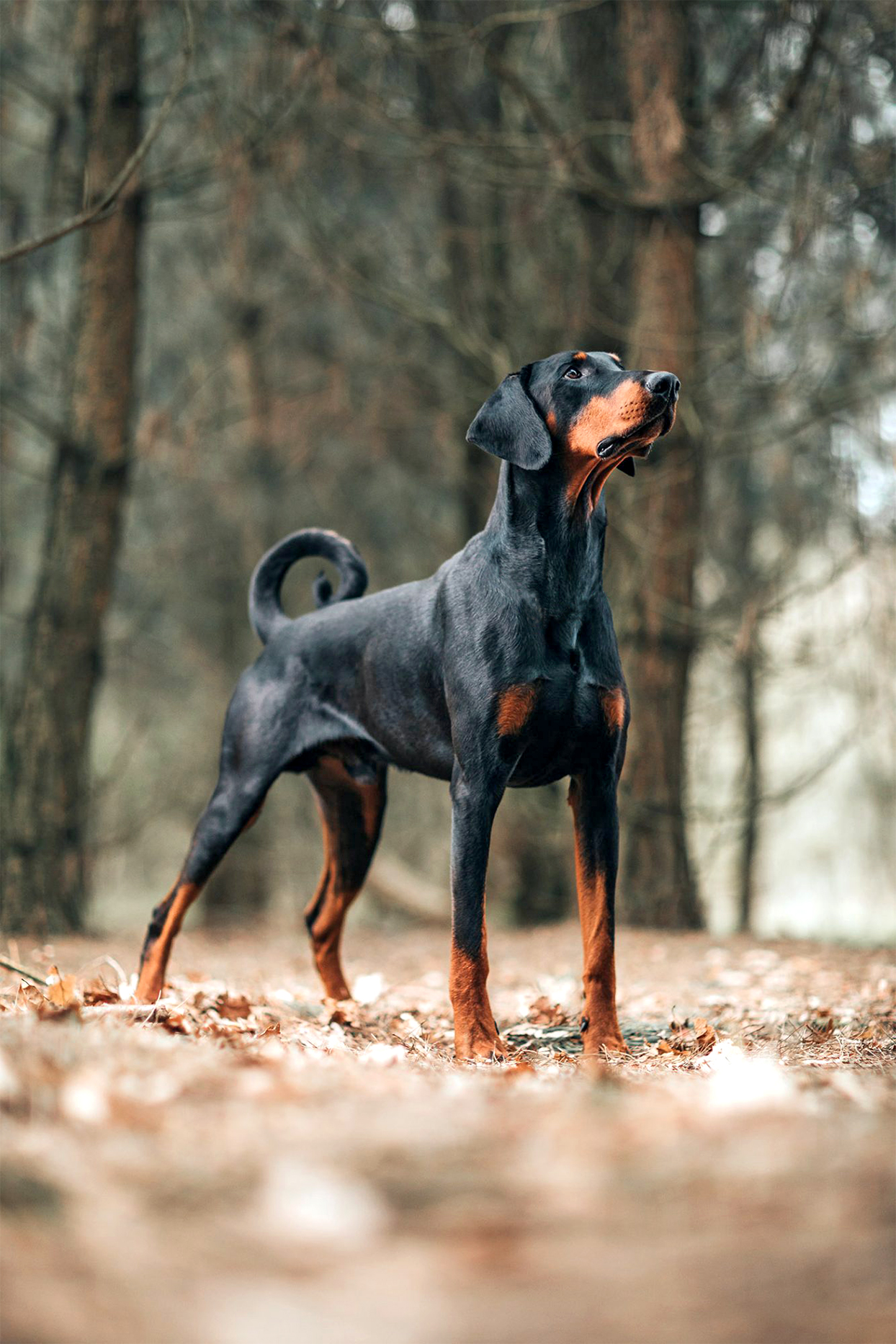
Knowing the physical traits of the Doberman will help you tell the difference between the Rottweiler and this breed. It is a dog with a robust and sturdy body, according to the FCI (1). He stands between 68 and 72 centimeters tall and weighs between 35 and 45 kg.
Dobermans have a wedge-shaped cranium and a large black or brown nose. His lips are brown or black, and his bite is scissor. Their eyes are oval in form, with a brown or black iris (depending on the tone of the fur). It also features ears that are angled towards the cheeks. The Doberman’s coat is silky smooth, short, and dense. It might be completely black with tan dots or chocolate or reddish brown with tan patches.
The Doberman’s behavior must also be studied in order to gain a thorough understanding of the breed. He is a really good-behaving dog who is docile and devoted. It takes training from a puppy, but due to its pleasant temperament, it responds perfectly to positive reinforcement training. It combines a high level of intelligence with a high level of activity and agility. You can get your Doberman on terrific behavior by following a few basic recommendations and avoiding scolding or punishment.
Rottweiler
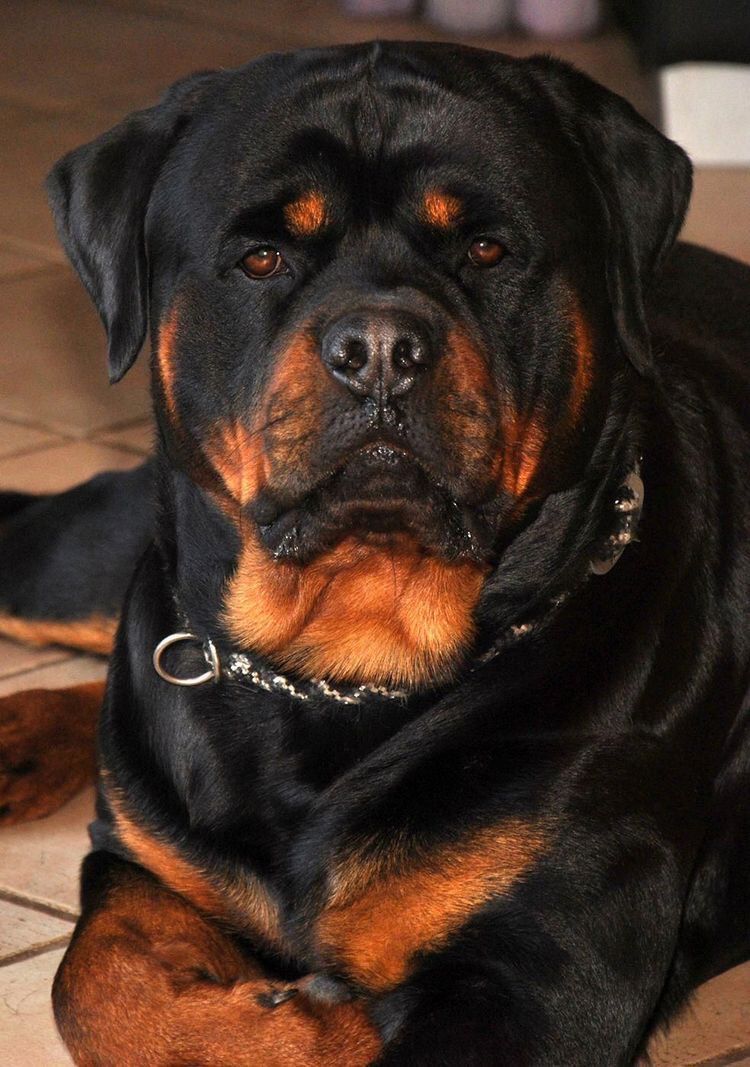
Investigating the Rottweiler’s physical traits also aids in distinguishing it from the Doberman. It is a robust dog with highly powerful muscles, according to the FCI (2). It stands between 63 and 68 centimeters tall and weighs between 40 and 60 kg.
The Rottweiler’s head is average in size, and his nose is always black. He has a scissor bite and his lips are tight and black. Dark brown eyes that are almond-shaped or somewhat rounded. It also has triangular ears that protrude forward. This fury’s fur is rough and thick, with a primary black hue with tan patterns on various sections of the body, including the chest, neck, face, and legs.
The solid demeanor of the Rottweiler distinguishes it from the Doberman and other breeds, making it a suitable dog for surveillance and protective activities. It is reported that it has aggressive tendencies and attacks that are unpredictable, however this is a tale, not a breed attribute (neither of this nor of the Doberman, nor of the pit bulls, nor the German shepherds or others that have been labelled with this stigma).
These scenarios can be avoided with early education and socialization, but it must always be remembered that if a dog is in a dangerous situation, it will first try to run, but if that is not possible, it will defend itself, just like any other animal.
The Rottweiler’s protective and watchful instincts make him an outstanding guard dog, yet these attributes do not hinder him from being friendly and loyal to his family.
Is a Rottweiler or a Doberman better for Guard Duty?
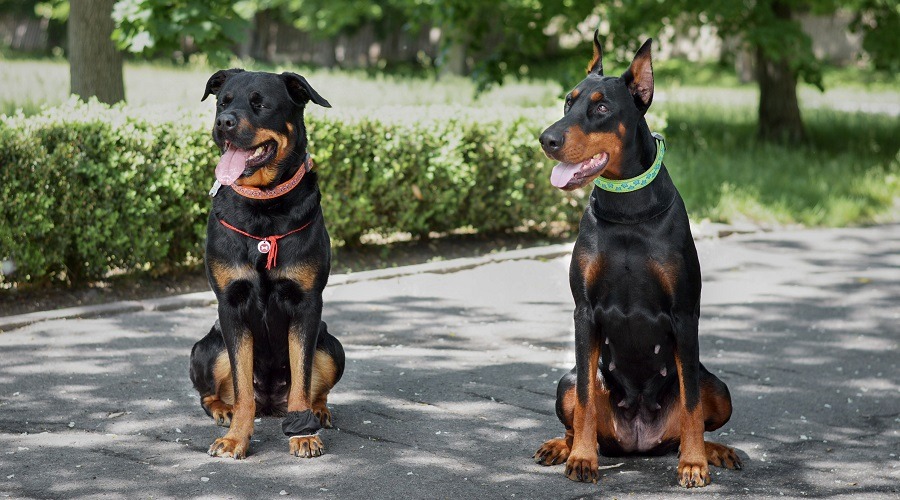
Many individuals are looking for a dog to assist them secure their home or a specific region, and they are wondering which dog is better for the job of guarding and protection: the Doberman or the Rottweiler.
When comparing the Doberman and Rottweiler, it can be concluded that the Rottweiler is better for guard job because it has a higher proclivity for this type of activity and is easier to train than the Doberman. He has a solid demeanor, which combines with his sense for vigilance and defense of his family, making him an excellent guard dog. The Doberman, on the other hand, possesses the physical (muscular strength and agility) and behavioral (obedience and loyalty) attributes that make him an excellent guard dog.
The most important thing is to remember that no dog is born knowing that they will always require education and expert training to become security dogs, even if their breed or mix of breeds has some characteristics that are more prominent than others. Another important consideration is that they cannot replace an alarm system that alerts the authorities, nor can they be left alone for long periods of time, as any other dog, because they are social animals, not machines, and require care and attention, as well as company and treatment as an additional family member.


